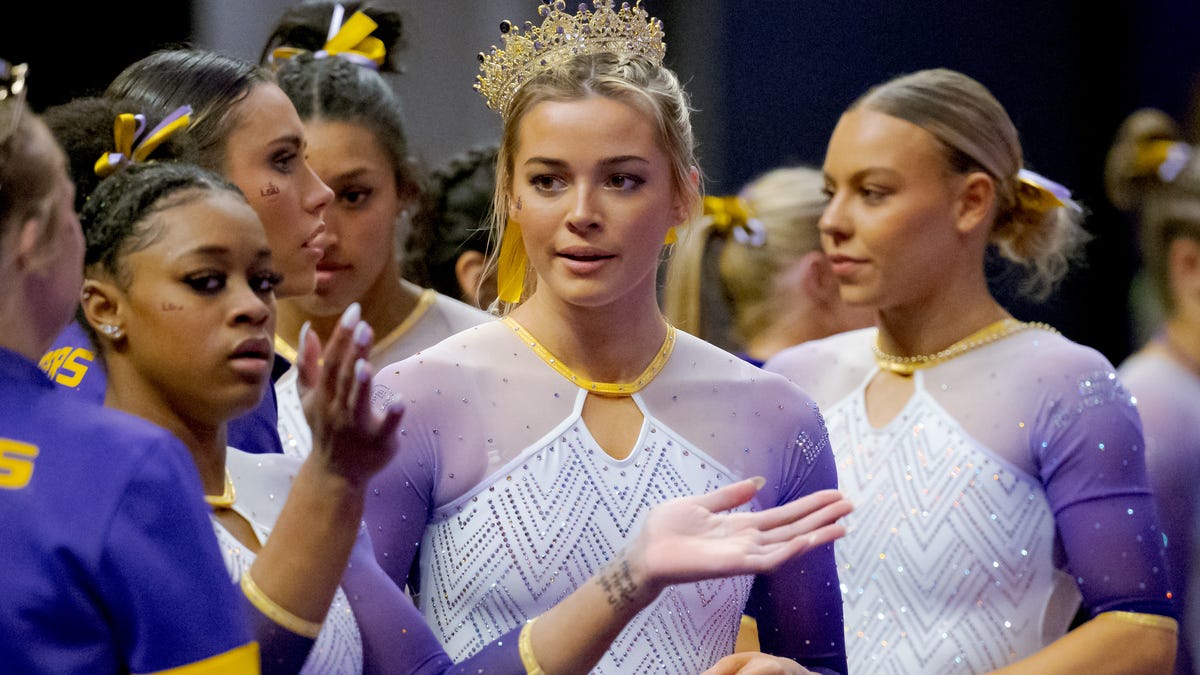House case: It’s not about gender rivalry, but the NCAA versus the free market
Let’s clarify: this isn’t about a social justice issue. It’s about fundamentally supporting American values.
This matter resides in the realm of capitalism.
While lawyers exchanged arguments during a Thursday evening webinar on how female student-athletes could be compensated through billions in NCAA damages as part of the House case, one significant question lingered in my mind.
How can anyone determine the market value of any student-athlete, regardless of gender?
I was astonished when U.S. District Judge Claudia Ann Wilken from the Northern District of California remarked that, although women have historically been at a disadvantage compared to men, damages can only be compensated for liability, “not other things.”
Other things? For instance, let’s consider the case of MAC cosmetics, the largest cosmetics company globally, which hasn’t signed any female student-athlete to a lucrative name, image, and likeness (NIL) endorsement deal.
Or a female athlete landing an NIL agreement with Coke, Frito-Lay, Home Depot, or, just to add some humor, Nike? Enough with the free advertising; you get the idea.
Isn’t the NCAA, which for years retained control over a student-athlete’s name, image, and likeness after signing a scholarship, accountable for all student-athletes, male and female, missing out on potentially millions from endorsement deals?
Just think about how much basketball sensation Caitlin Clark could have earned from her very first day at Iowa. More intriguingly, how much would global gymnastics star Simone Biles, who joined UCLA in 2014 (and whose case would lie outside the statute of limitations for this case), have been worth?
Consider also Oklahoma softball phenom Jocelyn Alo, who was the national player of the year in 2021 and 2022, guiding the Sooners to consecutive national titles. A three-time first-team All-American and a four-time Women’s College World Series all-tournament team member, Alo achieved a 40-game hitting streak and amassed 121 career home runs during her esteemed career.
Let’s be real; these stats are comparable to Joe Burrow’s performance. Burrow, the former star quarterback from LSU, may have earned up to $1.5 million as a result of the settlement reached between the NCAA and attorneys in the student-athlete class action lawsuit (known as the “House case,” named after lead plaintiff and former Arizona State swimmer Grant House).
Once again, just saying, I believe Burrow would concur that Alo’s market value was at least equal to his.
To clarify, I’m viewing this from a broad perspective, presenting reasonable considerations from an elevated viewpoint, while the challenging discussions take place at ground level. However, not everything in court makes sense.
Nor do all aspects surrounding the NCAA, whose attorneys aim to contain the damages they face. They’ve already lost over $2 billion and are eager to avoid further costs from claims related to the treatment of women compared to men.
This highlights the issue: we’ve framed this as a gender conflict when it should really be about the NCAA versus economic principles.
The NCAA is skillfully acknowledging that its lucrative media rights agreements and the influence of television on college sports is where this debate is centered, while hoping that everyone overlooks their hidden agenda. A hidden agenda that conceals the fundamental aspect of basic economics.
Ultimately, the market determines value.
One can argue that most media rights revenue is generated primarily from football and men’s basketball (and some baseball), but that doesn’t negate how signing away NIL rights upon accepting a scholarship affected all athletes’ income potential, regardless of gender.
It’s crucial to understand that media rights partners need programming and utilize men’s and women’s non-revenue-producing Olympic sports to fill schedule segments until the football and basketball seasons commence. Just last basketball season, we witnessed a small spark in Iowa City erupt into a worldwide phenomenon.
Some might argue that since Clark was able to monetize her NIL, what about the male and female athletes who couldn’t? How much did LSU gymnast Livvy Dunne miss out on by not being able to use her name, image, and likeness during her freshman year in 2020-21?
As of May 2023, she had already earned upwards of $3 million through NIL opportunities.
Consider how much Texas golfer Scottie Scheffler could have earned during his time at a premier collegiate sports brand through NIL deals.
The answer to all of these queries: we simply don’t know. That’s the crux of this repetitive debate, where lawyers are unfortunately being compensated heavily to obstruct student-athletes from reclaiming theirs.
The discussion isn’t about men versus women or who has generated more revenue from media rights deals and therefore deserves to earn more.
This is a conflict between the NCAA and capitalism, tracing back decades to the sheer audacity of the collegiate sports governing body insisting athletes forfeit their right to profit from their name, image, and likeness — or choose not to participate at all.
To those who believe that equal damages in the House case could lead to the NCAA’s financial ruin, consider the latest media rights agreements for the top conferences: the SEC, Big Ten, Big 12, and ACC combine for over $4 billion in annual media rights and College Football Playoff contracts.
That’s billion, with a “B.” Every year.
Nobody at the NCAA is facing financial distress, folks.
Towards the end of Thursday’s proceedings, Judge Wilken had heard enough and directed both parties’ attorneys to return to negotiations and establish a new model for distributing damages.
In 2020, university leaders managed to keep college football going—a vital source of income for college sports and a key component of media rights agreements—even amidst a pandemic. So it stands to reason they can make progress on this issue as well.
And it wouldn’t hurt to begin with some basic economic principles.

